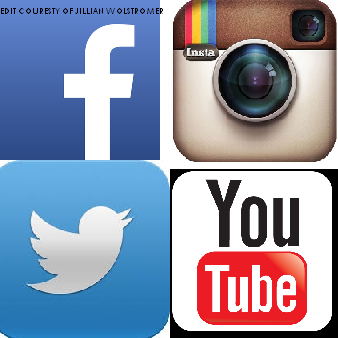If you’ve been on Twitter, Vine, Facebook, Instagram or even Snapchat in the past month, you’ve probably heard of Alex from Target.
Alex was just a regular guy working at Target, until someone took a picture of him, posted it on Twitter, and he went viral. Teenagers everywhere turned him into a meme, and #alexfromtarget was trending for hours. However, while many people took joy in the new meme, others were asking why? Why is this boy, who has done absolutely nothing but have a picture taken of him, suddenly famous? What makes him special enough to go viral?
The question of “what makes something go viral?” is one asked by social media users everywhere. Many experts believe that a video, or picture, that tugs at emotional heartstrings is likely to go viral. Videos and pictures of soldiers coming home, animals being rescued, or surprising contestants on shows like the X Factor usually go viral. These videos make people happy. Seeing a soldier return from war fills people with joy and makes them happy. If something makes people happy, they want to share it with their friends. People post it on Facebook, or Twitter, they email their family, and the video racks up views
Often, random videos and pictures go viral that are just funny. Look at Rebecca Black’s “Friday”. It’s a several minute long horribly sung autotuned song about how glad she is it’s Friday, yet it has 73 million views on Youtube. Why? Because people think it’s funny. People like to laugh at how awkward the video is, and how badly autotuned it is.
The reason “Friday” is amusing is the same reason that you can go on Vine and see countless Vines with people singing “a potato flew around my room”. The trend was started when a Vine user posted a video of themselves singing the wrong lyrics to Frank Ocean’s “Thinkin’ About You”. The Vine took off with people playing the song over videos and soon a viral trend was born.
While the internet can make seemingly pointless memes and people famous, it can also use its power for good. Over the summer, the ALS Ice Bucket challenge went viral. People were “nominated” by friends and family to either take a video of themselves dumping a bucket of ice water on their head, or donate to the ALS Association. The trend was viral for weeks, and the ALS Association raised over $100 million.
Another example of the internet using its power for good is the 2013 case of Batkid. A 5-year-old leukemia patient was referred to the Make-a-Wish Foundation with his wish to become Batman. Hoping to make his dream come true, the Make-a-Wish Foundation posted a link online for people to volunteer to cheer Batkid on. The event soon went viral, and thousands of people came out to support him. Make-a-Wish was only hoping for a few hundred volunteers, but the power of the internet was too strong, and it soon became a city wide event. The foundation turned San Francisco into Gotham City for the day, while Batkid ran around fighting crimes in his Batmobile.
According to a New York Times article people are more likely to share a happy article than a sad one. However, videos that create a strong emotional response are also very likely to be shared.
Some articles and websites, such as Buzzfeed and Upworthy, create content that is shared by many people, and sometimes goes viral. However, these websites have been criticised for creating “Click Bait,” when an article has a really exciting title, with not-so-exciting content.
Despite the research showing what type of content goes viral, no one has yet to come up with a formula to make something go viral. As shown by Alex from Target, sometimes the internet just has random victims. No one really knows why or how events like this occur, but if someone can figure it out, they’ll be a billionaire.

Leave a Reply